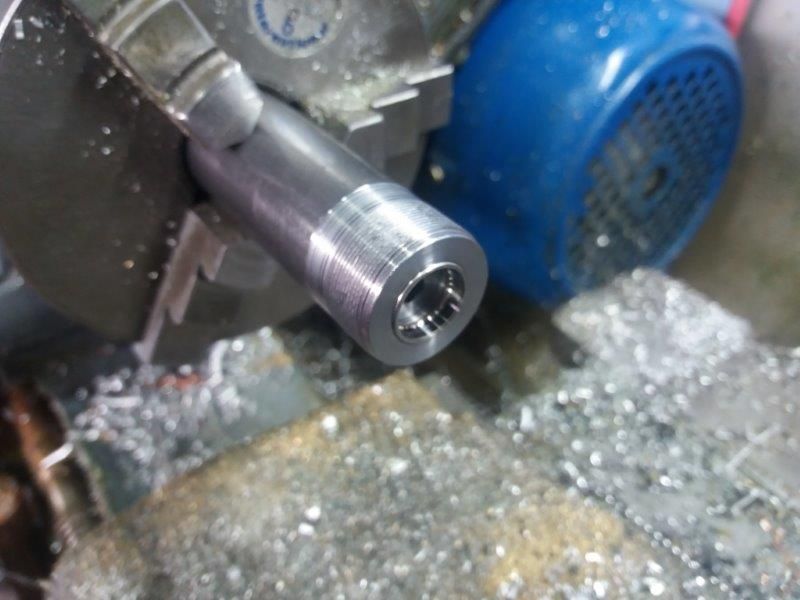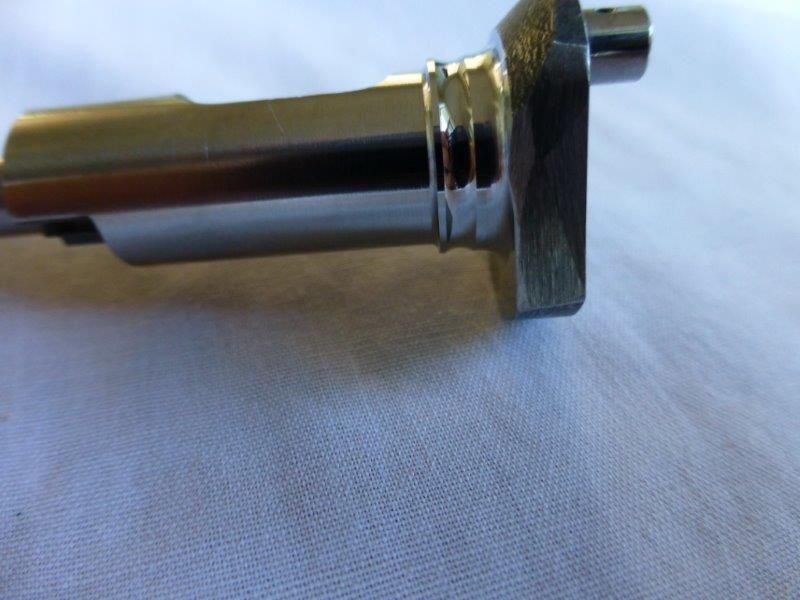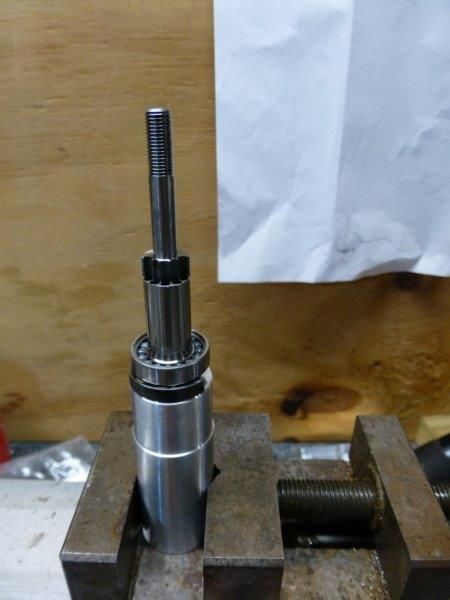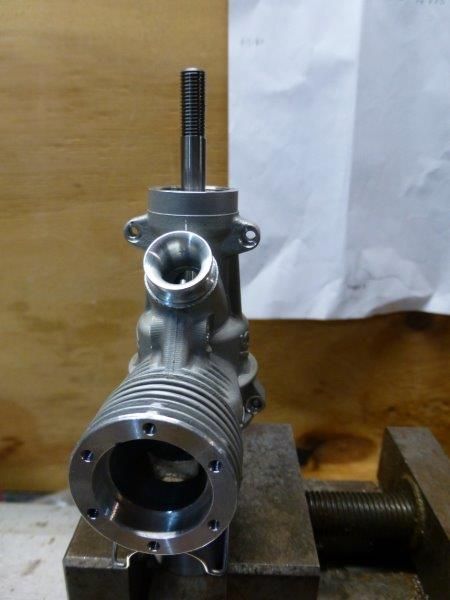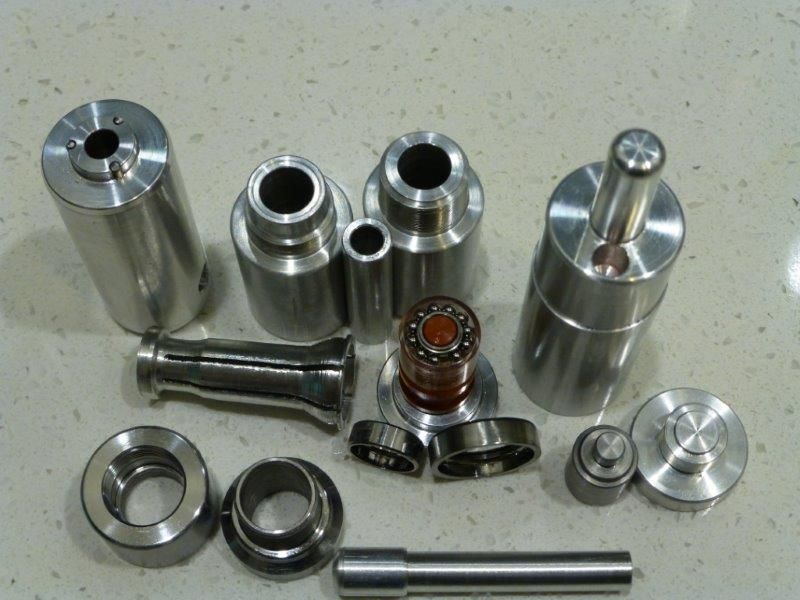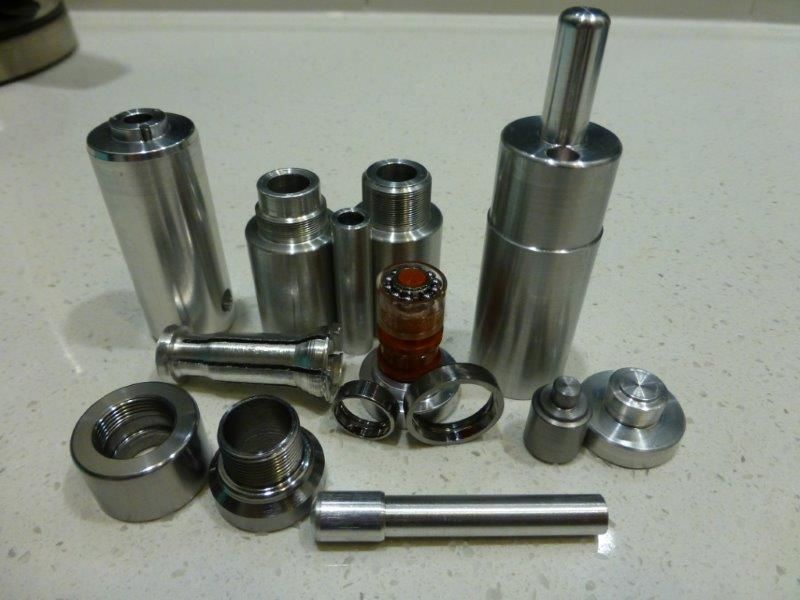I have set out to modify the the outer bearing races of 10X22 bearings for us in a 2011 Proi 2.5 cc speed engine. I want to change the existing that uses a 10X22 outer race with the polyamid cage and 9 balls to a cageless near full compliment ceramic ball rear bearing and a cageless front bearing. Both the rear and the front bearings become magneto bearings. The rear bearing taking the axial thrust and the radial forces of the crank assembly and the front bearing taking the radial forces and controls the amount of total endfloat between the two.
I made a fixture of sorts, that holds the outer ring while it gets turned. I made the inner bore of the shell holder slightly less than 0.01mm smaller than the outer diameter of the bearing shell. I used castor oil as a lubricant to assemble the ring into the fixture and had a clamp ring to aid in the assembly. Then I bored out to the diameter of the ball race to the centreline from one side and then diamond polished it. There is a ring inside that allows the extraction of the outer race. Some assemble tooling was required and some more tooling required to measure the position of the crankshaft to the front bearing seat. Other tooling to measure the position of the inner race to the outer race position as well. Instead of making shims for the outer race of the front bearing, I turned the end of the race shorter by the measured amount.
I have some pictures of the tooling and the shaft and case. The project worked better than I thought, and had a RPM gain of 300 to 400 rpm. I did not think that the cages could be producing enough drag to make that much difference. The idea of the project was to get a longer life from the integral bearing crank shaft, and a longer life from the front bearings. Im not sure on the front bearing life just yet as it has only done test bench running. The other engine with the home made outer bearing shell of the same design but using 2.5mm ceramic balls is lasting very well so far. This one uses 1/8 ceramic balls, so I expect this set up to last a longer time.
Fixture and Modified 6X15 outer shell. Turned using Kyocera insert ccgt060202mp-ck pr1425 on a 10mm shank boring bar at 500 rpm 0.1mm cuts 0.2mm diameter at a time.

Ian S C.


